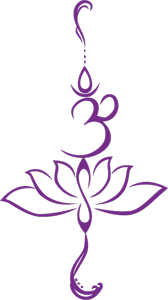The Touch of a Massage Therapist
 According to Rick Chillot in Psychology Today, touch is the first language we learn because it is the first sense babies acquire. Touch is very important to the healthy development of babies. A touch can soothe, reassure, convey love, assist, and it can nonverbally convey a host of other messages, both positive and negative.
According to Rick Chillot in Psychology Today, touch is the first language we learn because it is the first sense babies acquire. Touch is very important to the healthy development of babies. A touch can soothe, reassure, convey love, assist, and it can nonverbally convey a host of other messages, both positive and negative.
In 2009 psychologist Matthew Hertenstein’s study showed that humans can decode emotions by way of touch alone. Yet we live in a society that shuns most touch. Interestingly enough, cultures in warm climates are more open to touching than cultures in colder areas.
The touch of a massage therapist
We store an incredible amount of emotions in our muscles and tissues. Anything that we refuse to deal with is stored not only in our subconscious, but in our body. When we are touched by a massage therapist, our muscles and tissues release tension. They also release the emotions that have been stored over time in our bodies.
When these emotions are released, the result can be laughter, tears, sighing, and even twitching of the muscles if we feel safe enough in the confines of the massage therapist’s massage therapy suite to allow the release.
Massage therapists say that crying is not an unusual response to massage therapy, especially if the therapist is working on an area of the body that holds a memory of physical trauma. The trauma may be long forgotten, and it may not have had a safe place before to surface. Massage therapy can be a great adjunctive therapy to professional counseling.
Benefits of massage therapy
Massage therapy also encourages the body to release stress. Many people hold onto stress in their bodies for days, months, and even years. This stress contributes to physical illnesses, relationship difficulties, and emotional illnesses. Regular massage therapy can help clients avoid all this when they have no other coping mechanisms for releasing stress.
Most massage therapists also teach their clients healthy breathing techniques for releasing stress as they undergo a massage. These breathing techniques expand the lungs, bringing more oxygen into the body. Very few people breathe deeply and regularly, so clients benefit from learning healthy breathing.
Healthy touch can also mitigate the pain response so that clients feel less pain after a massage. With the increase in lymph and blood circulation that occurs during a massage, toxins that are instrumental in causing pain and discomfort are offloaded.
When a massage therapist touches a client’s skin, the muscles, tendons, and ligaments near the surface of the skin relax. This relaxation often carries deeper into the body into musculature that cannot be accessed by the therapist’s touch. Often the result is better alignment and balance within the body.
In our touch-phobic society, many of us are touch-deprived. We go through life longing for safe, healthy touch. Massage therapy is a wonderful way to get the type of touching we got when we were kids, the kind, loving, safe touch that heals the heart as well as the body.


